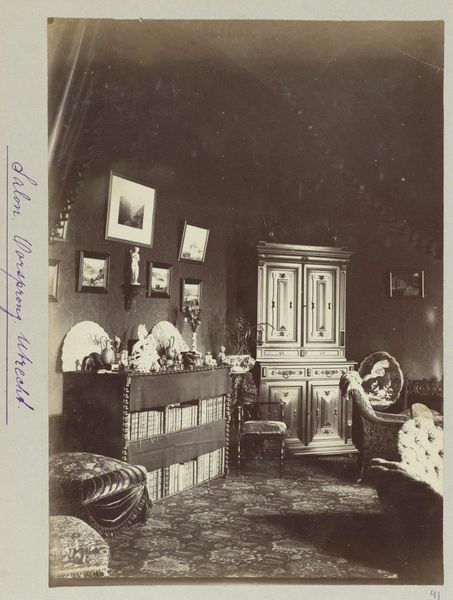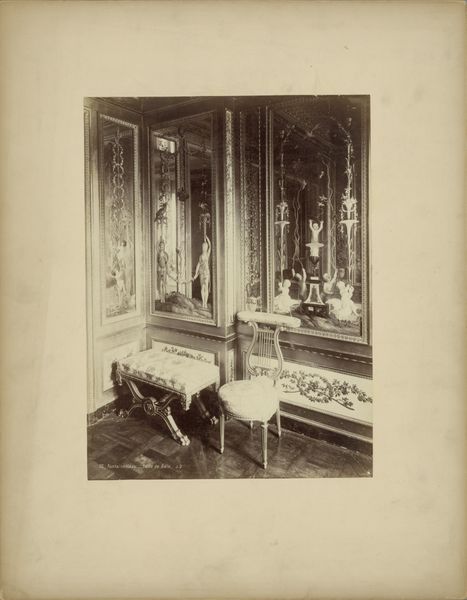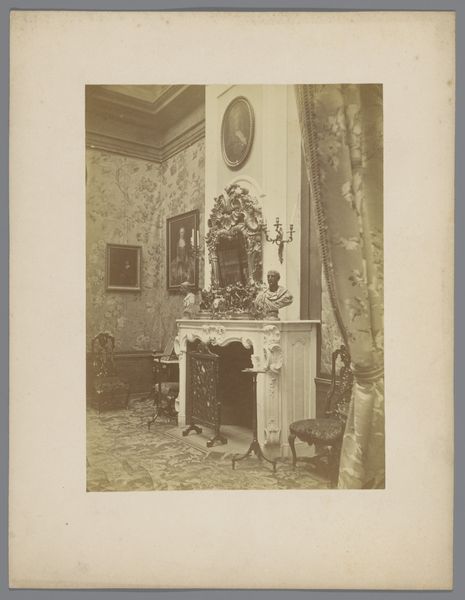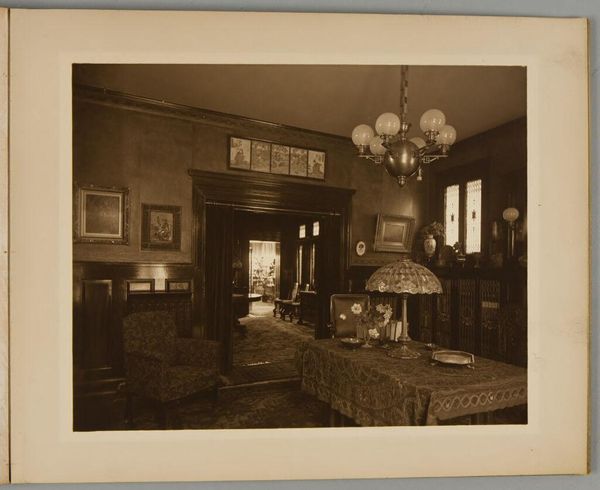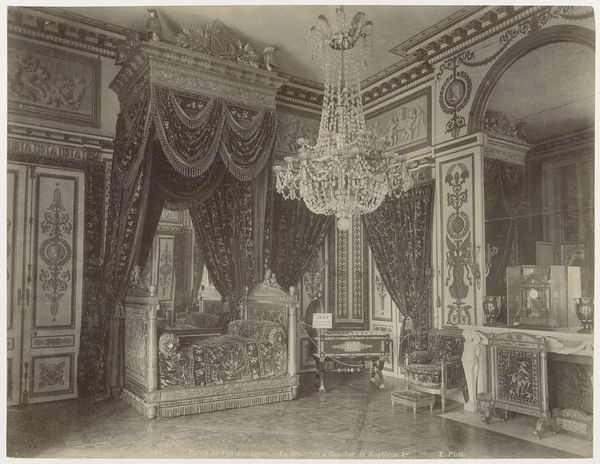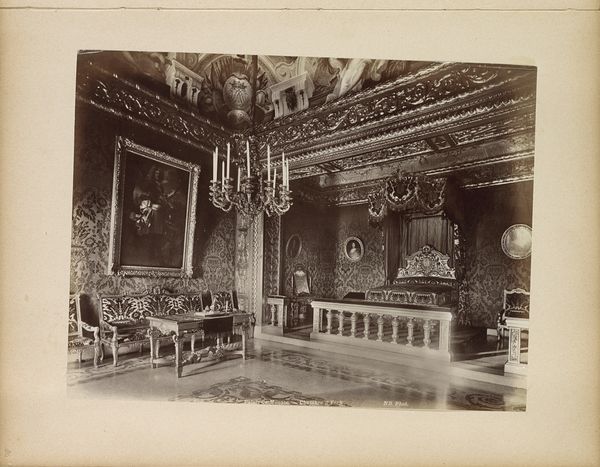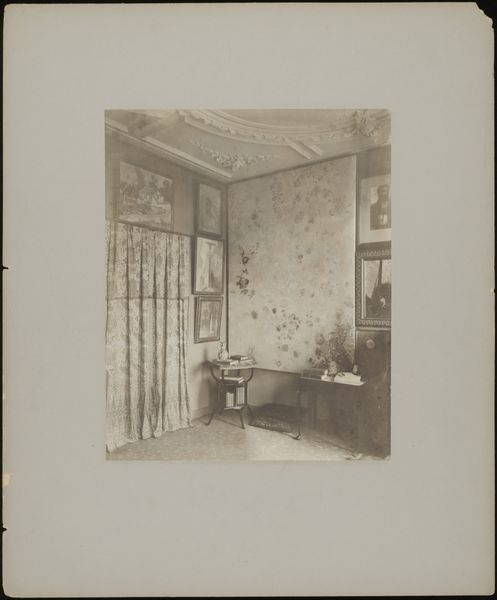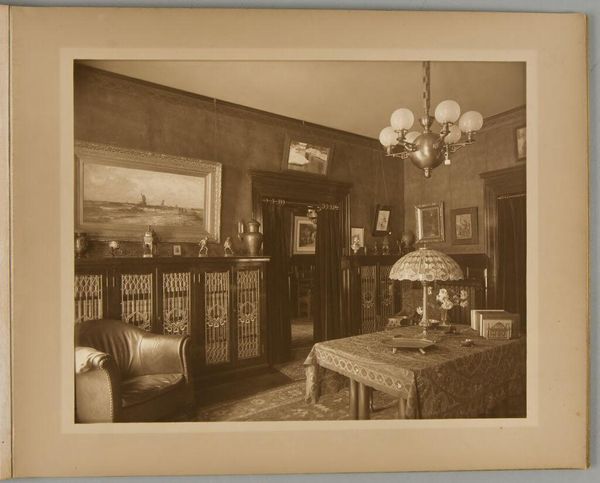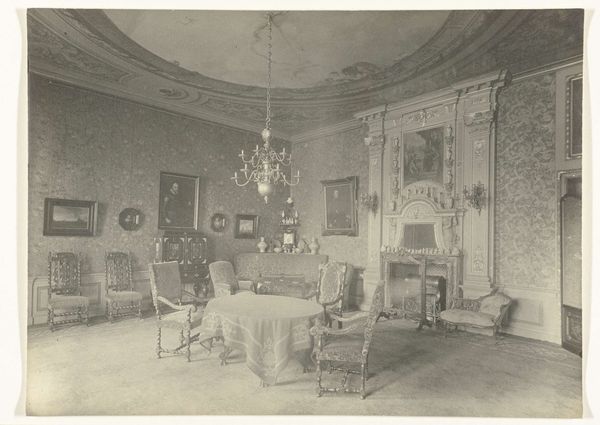
Dimensions: image, sheet: 8 9/16 x 7 1/8 in. (21.75 x 18.1 cm)
Copyright: No Copyright - United States
Curator: Eugène Atget’s "Intérieur de Mme. C. Modiste," captured around 1910, presents us with an evocative scene. Editor: The first thing that strikes me is how heavy and ornate everything is. The image is sepia-toned and has a soft, almost hazy quality which conveys a sense of being frozen in time, like an airless room. Curator: Precisely. Atget’s documentation of Parisian life aimed to capture a disappearing world, and the image holds several fascinating symbolic keys. Notice the gas chandelier dominating the scene— a symbol of domesticity, order and class in that era. Editor: And that imposing dark wood dresser. Look at the scale and texture— the way the light struggles to define the carvings on its face. What was the significance of the modiste, the milliner's trade, at that point? It looks as if Atget intentionally avoided including the figure to shift our focus to the work's environment. Curator: The Modiste, or milliner, was more than a craftsperson; she was a gatekeeper to fashion and social mobility. Her boutique was a theater of aspiration. This image might suggest an era of excess. Do you notice any potential commentary on class or gender within this space, using the trappings of luxury? Editor: It could be interpreted in a multitude of ways. However, consider the work's function as an albumen print—a mass-produced photograph—it was to show detail to others and was made affordable to many people. Its role isn't as simple as upholding class structures if its production aimed to share such imagery more freely. The accessibility granted through mass production provides a perspective that challenges a direct alignment with class conservatism. Curator: That's a powerful point. It reflects how photography democratized representation, bringing images previously confined to the wealthy into wider circulation. Looking closely we see pictures on the bureau: echoes of social aspirations, perhaps. It prompts reflections about labor, interior space, and the gaze itself. Editor: Yes, ultimately, examining the materials and techniques pulls our focus from just decoding symbols and urges to reflect more on the process and historical means of creating these types of cultural documents. Thank you. Curator: Thank you.
Comments
No comments
Be the first to comment and join the conversation on the ultimate creative platform.

